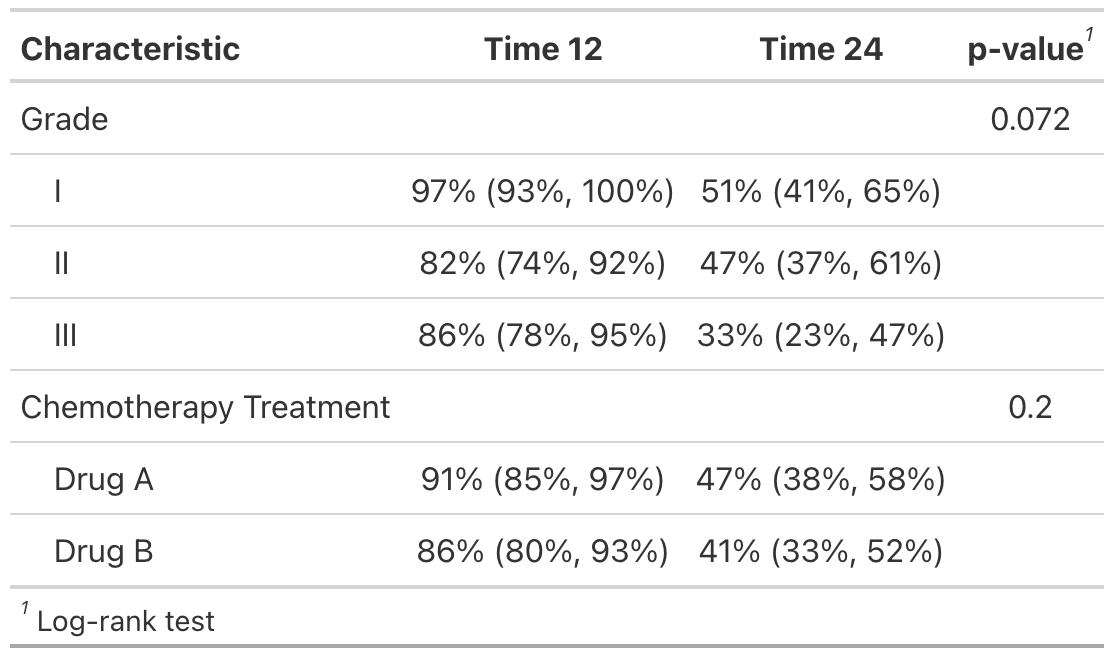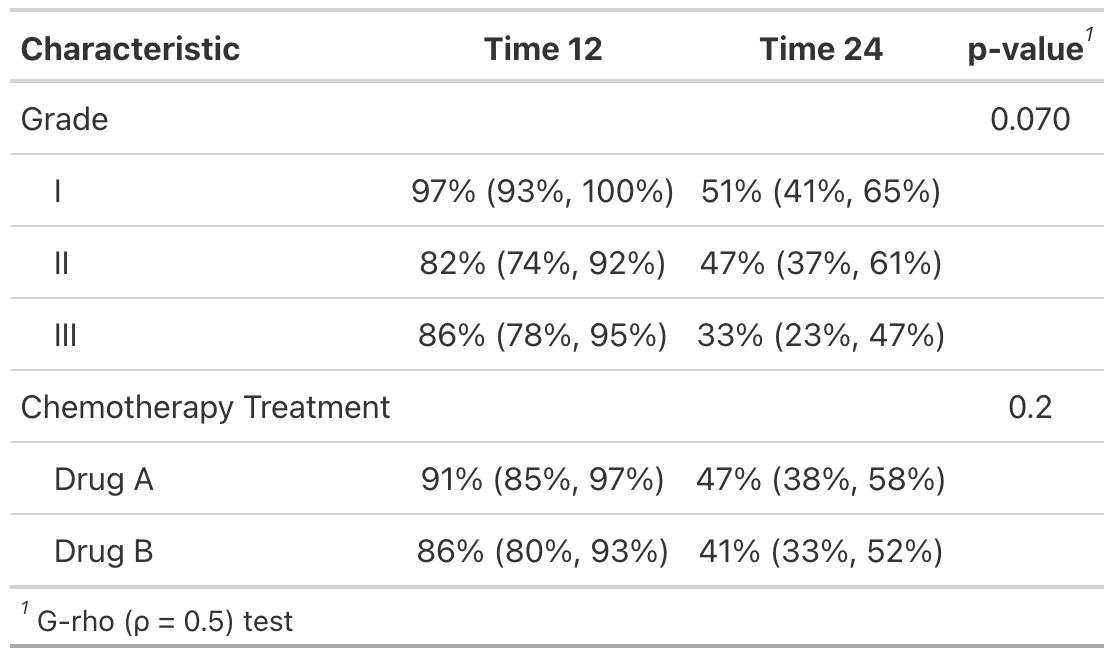add_p.tbl_survfit: Adds p-value to survfit table
Description
lifecycle::badge("maturing") Calculate and add a p-value
Usage
# S3 method for tbl_survfit
add_p(
x,
test = "logrank",
test.args = NULL,
pvalue_fun = style_pvalue,
include = everything(),
quiet = NULL,
...
)Arguments
- x
Object of class
"tbl_survfit"- test
string indicating test to use. Must be one of
"logrank","tarone","survdiff","petopeto_gehanwilcoxon","coxph_lrt","coxph_wald","coxph_score".See details below- test.args
List of formulas containing additional arguments to pass to tests that accept arguments. For example, add an argument for all t-tests, use
test.args = all_tests("t.test") ~ list(var.equal = TRUE)- pvalue_fun
Function to round and format p-values. Default is style_pvalue. The function must have a numeric vector input (the numeric, exact p-value), and return a string that is the rounded/formatted p-value (e.g.
pvalue_fun = function(x) style_pvalue(x, digits = 2)or equivalently,purrr::partial(style_pvalue, digits = 2)).- include
Variables to include in output. Input may be a vector of quoted variable names, unquoted variable names, or tidyselect select helper functions. Default is
everything().- quiet
Logical indicating whether to print messages in console. Default is
FALSE- ...
Not used
test argument
The most common way to specify test= is by using a single string indicating
the test name. However, if you need to specify different tests within the same
table, the input in flexible using the list notation common throughout the
gtsummary package. For example, the following code would call the log-rank test,
and a second test of the G-rho family.
... %>%
add_p(test = list(trt ~ "logrank", grade ~ "survdiff"),
test.args = grade ~ list(rho = 0.5))
Example Output
Example 1

Example 2

See Also
Other tbl_survfit tools:
add_n.tbl_survfit(),
add_nevent.tbl_survfit(),
modify,
tbl_merge(),
tbl_split(),
tbl_stack(),
tbl_strata(),
tbl_survfit()